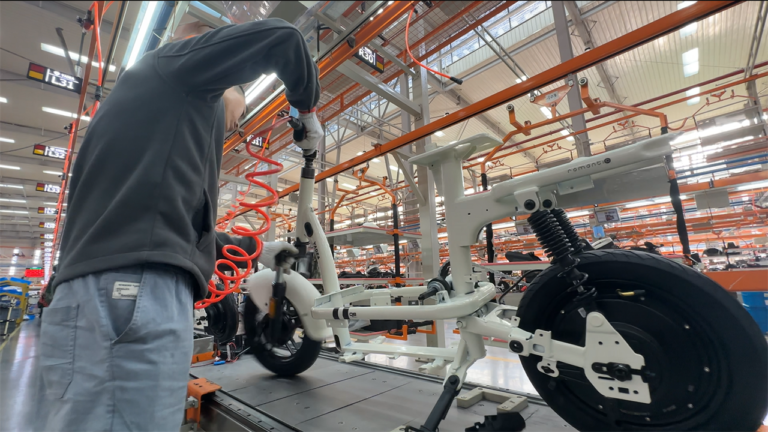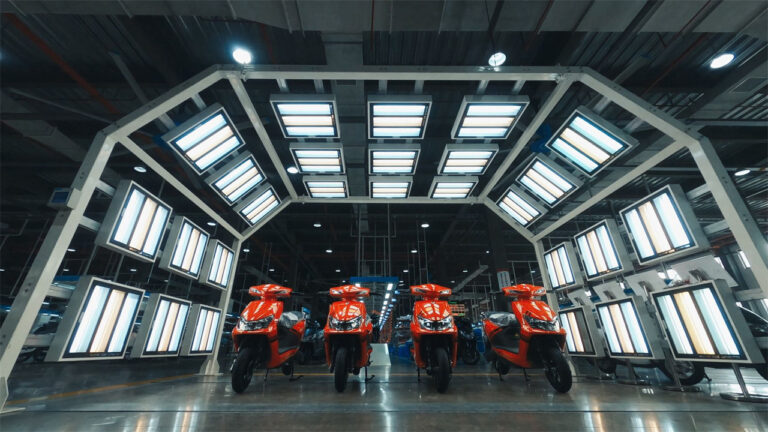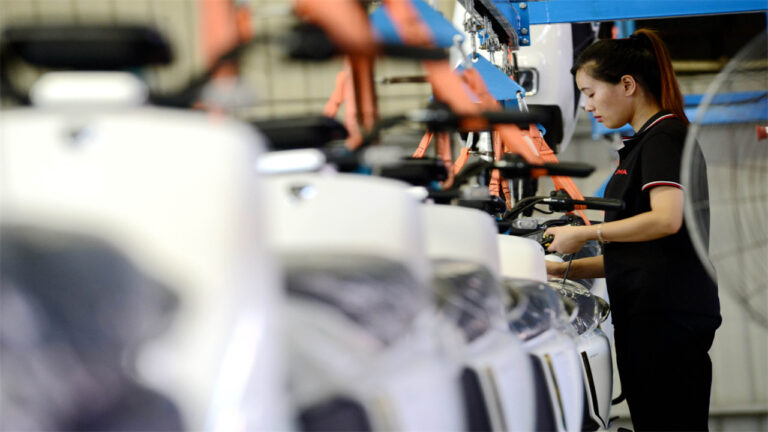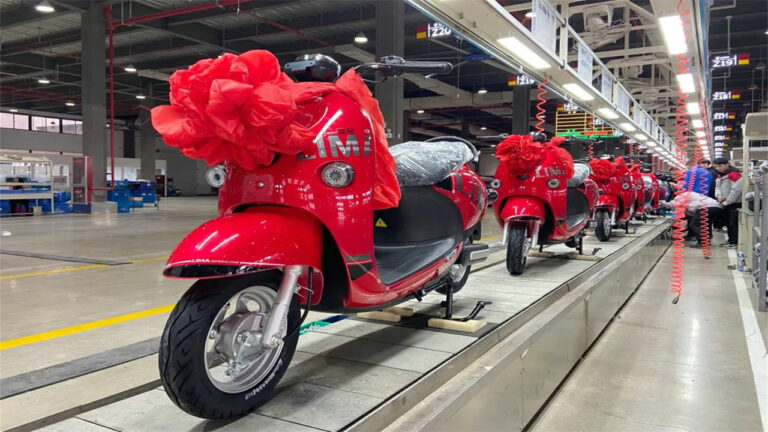E-scooter Assembly Line
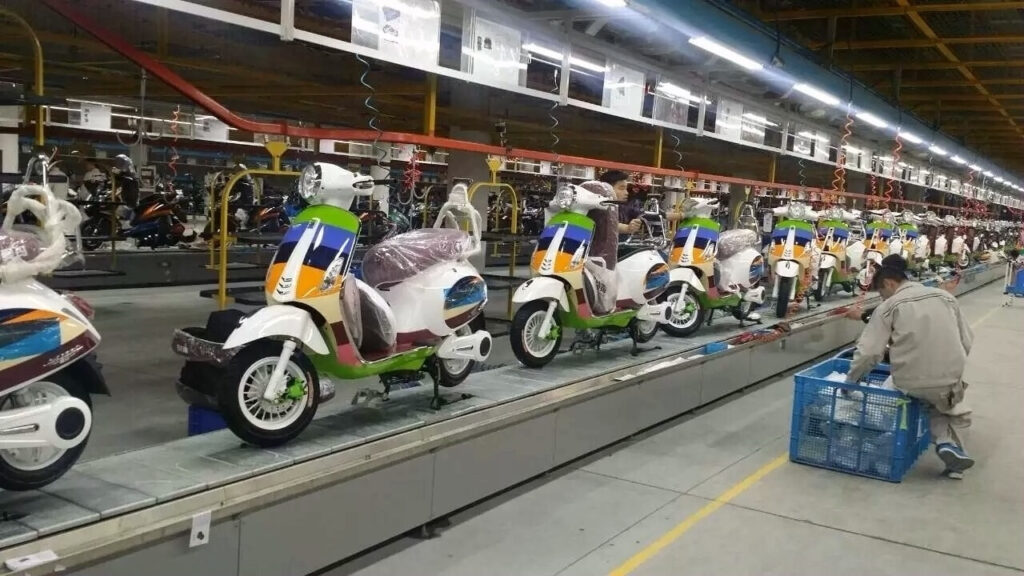
Suitable to Assemble/Produce 2 wheel Motorcycles, 2 wheel Scooters, 2 wheel Electric-cycles, 2 wheel E-Bikes, Bicycles, and so on.

The electric scooter assembly line is a highly automated and information-based production process, integrating a variety of advanced technologies to enhance manufacturing efficiency and product quality. Key features and workflows of the assembly line include:
- Design and Prototyping:
The manufacturing process of electric scooters begins with detailed design and engineering, where engineers utilize CAD software to create prototypes that prioritize functionality, durability, and aesthetics. Extensive prototyping and testing ensure that the scooter’s design meets rigorous standards before mass production commences. - Material Sourcing:
After the design is finalized, the next step involves sourcing high-quality components and materials. Trusted suppliers are prioritized to provide parts that ensure the longevity and performance of the electric scooters, with materials such as aluminum and steel for the frame, and lithium-based batteries for power. - Cutting and Shaping:
The sourced materials are then cut and shaped into specific parts of the scooter, such as the deck, handlebars, and stem. Precision cutting tools like laser cutters or CNC machines ensure that components adhere to exact design specifications. - Motor and Battery Assembly:
The motor, a critical component of the electric scooter, is typically a brushless DC motor known for its efficiency and durability. Alongside the motor, the battery pack, usually lithium-based, is assembled to provide the necessary power for propulsion. - Circuitry and Controls:
The electric circuitry forms the scooter’s nervous system, linking the throttle, brakes, and lighting to the central controller. Circuit boards are carefully designed and populated with components before undergoing functionality testing. - Frame Assembly:
With all components prepared, the scooter’s frame is assembled, often combining human and robotic efforts to ensure precision. Critical elements like the folding mechanism and suspension are fitted at this stage to ensure portability and comfort. - Quality Control and Testing:
Quality control is a fundamental part of the manufacturing process. Each electric scooter undergoes rigorous testing for mechanical integrity, electronics function, and safety to ensure it meets the highest standards. - Packaging and Shipping:
The final step involves carefully packaging the electric scooters to prevent damage during transport. Once boxed, scooters are shipped to distributors, retailers, and directly to customers, ready to provide eco-friendly and convenient mobility solutions.
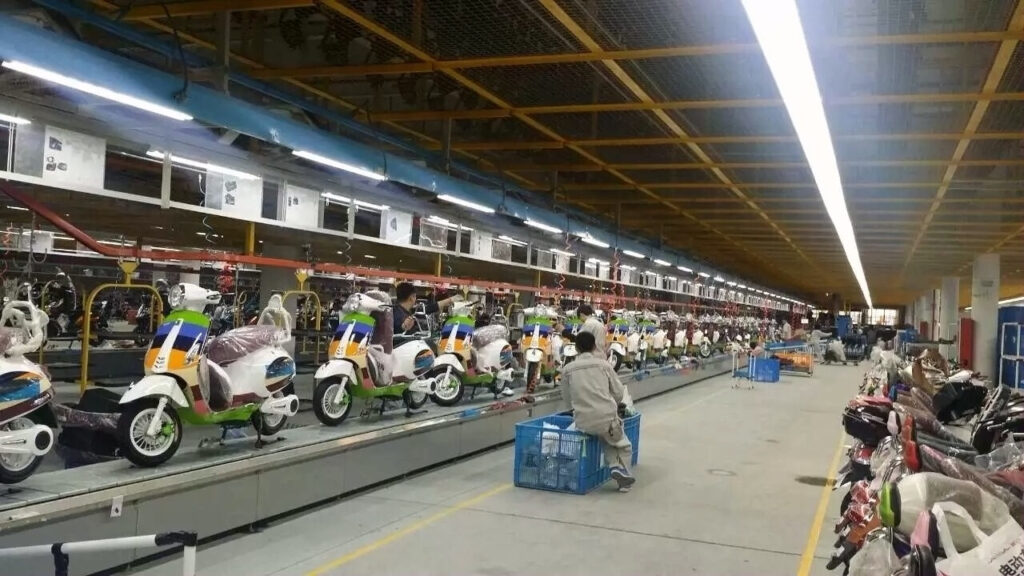
These steps reflect the manufacturing standards of the electric scooter industry, aiming to ensure high-quality, efficient, and reliable products that meet the diverse needs of the market and consumers.
